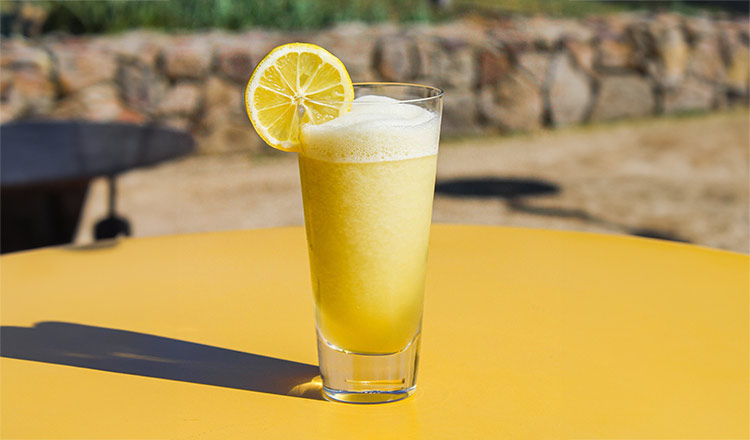Some moments are made for frozen cocktails: happy hour on a summer Friday, a poolside vacation day, and—of course—Taco Tuesday any time of the year. And, in the spirit of celebrating everything, we think you deserve an upgrade.
Bottled cocktails can be great (look for small brands and short ingredient lists), but so often they are cloyingly sweet and syrupy, lacking the bright fruit flavors that we all love in a frozen drink. We turn to them for convenience, but what if we told you that you could make incredible, custom frozen cocktails from scratch without much effort at all? Say no more.
The essence of crafting cold, refreshing frozen cocktails lies in understanding basic principles and techniques, rather than adhering to strict measurements. Here’s a guide to help you navigate the process of creating your own mix.
The Basics
Frozen cocktails are typically a blend of alcohol, fruit, and a frozen element, usually ice. The key components are:
- Base Liquor: This can be rum, tequila, vodka, gin, or any spirit of your choice. The base liquor gives the cocktail its alcoholic kick.
- Fruit: Fresh or frozen fruit adds flavor and sweetness. Common choices include strawberries, mangoes, pineapples, and bananas, but any fruit is fair game. You can also use fruit juices or purées if fresh fruit isn’t available.
- Frozen Element: Ice is the standard choice, but you can also use frozen fruit in its place to add flavor while chilling the cocktail. We recommend adding some ice or thinning the mixture with water, or else your drinks will be stronger than intended. For a smoother texture using ice, crushed ice or ice cubes work well.
- Sweeteners and Acids: Sweeteners like simple syrup, honey, or agave nectar balance the tartness of the fruit, but you may need very little or none at all. Be sure to taste your mixture before you add any sweeteners, especially if using sweet, ripe fruits like cherries or melons. Lime or lemon juice adds a zesty kick and enhances the overall flavor.
Choosing Your Ingredients
Begin by selecting your base liquor and fruit. Neutral flavored spirits like vodka and rum blend well with most ingredients, but it’s your cocktail! Dark rums pair beautifully with tropical fruits and ginger, while whiskeys inspire thoughts of summer peaches on the front porch.
If you’re unsure which combination to try, think about classic pairings: mango and rum, pineapple and tequila, or strawberry and vodka. Fresh fruit provides vibrant flavors, but frozen fruit is the quickest option (and a great second-job for your smoothie stash!). For a tropical vibe, go with pineapple and coconut, or for a berry blast, mix strawberries and raspberries.
Balancing Flavors
When crafting a frozen cocktail, balance is key. Start with a base of about 1 to 1 1/2 cups of fruit. Add about 1 cup of ice (or extra fruit, if using frozen). Blend until smooth. If the mixture is too thick, add a splash of juice or water to help blend.
Next, add your base liquor. A good rule of thumb is about 1 to 2 ounces per serving, but adjust based on your preferences. Taste the mixture and adjust as needed. If it’s too tart, add a sweetener like simple syrup. If it’s too sweet, add a splash of citrus juice to cut through the sweetness and add complexity. If the alcohol is overwhelming, that’s a good sign to add more ice to dilute the strength.
Blending Tips
Use a high-powered blender for the best results. Start by blending the fruit and ice first, then gradually add the liquor and any additional ingredients. If you’re using fresh fruit, you might need to add more ice to achieve a slushy consistency. Frozen fruit often requires less ice and blends more easily into a smooth texture.
Experimentation and Variations
The beauty of making cocktails without a recipe is the freedom to experiment. Try different fruit combinations or add a splash of flavored liqueurs or syrups for a unique twist. Blend in herbs, like mint for a frozen mojito, or basil for a summer strawberry daquiri. For a non-alcoholic version, simply omit the liquor and add a bit of sparkling water or soda for a refreshing mocktail.
Feel free to adjust the texture by playing with the amount of ice and the blending time. For a creamier texture, you can blend in a small amount of yogurt or coconut milk. Adjust the sweetness and acidity until you’re happy with the flavor.
If you have leftover frozen cocktails, freeze them to blend again later, if you like, or freeze the mixture in popsicle molds (label them appropriately to indicate if they contain alcohol).


